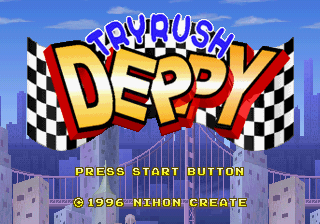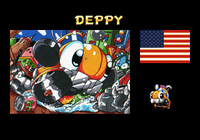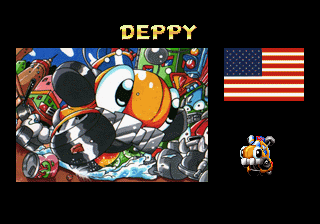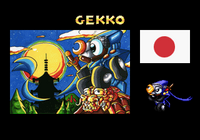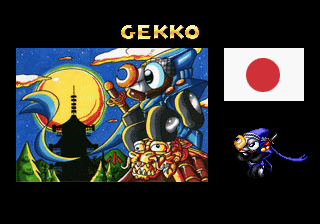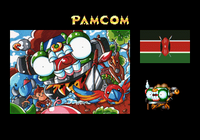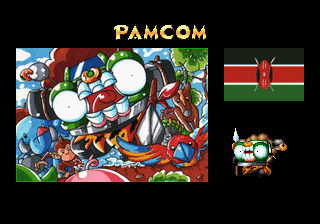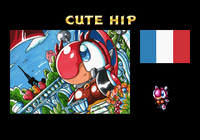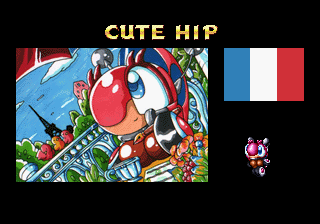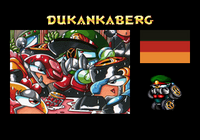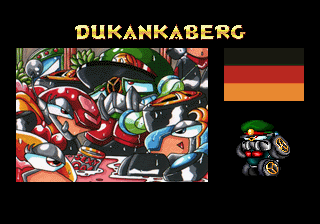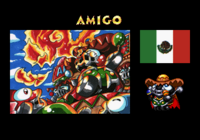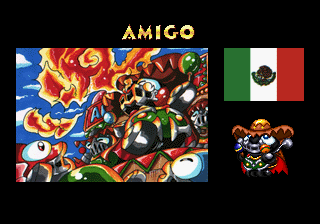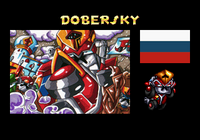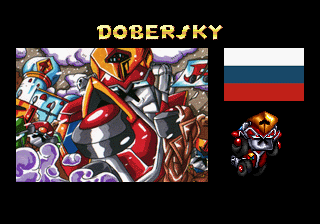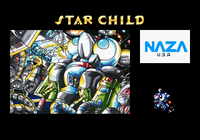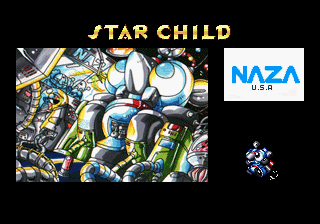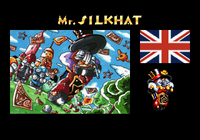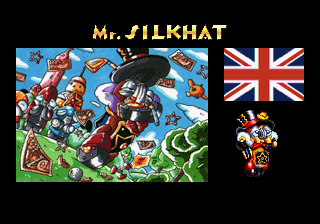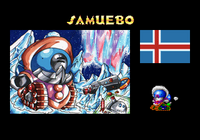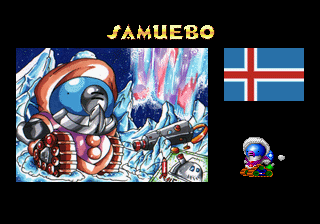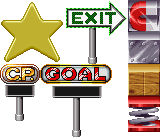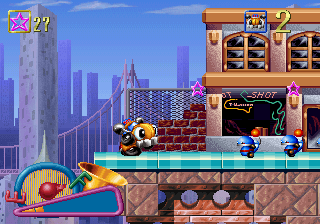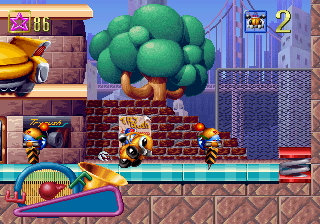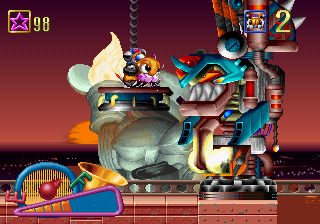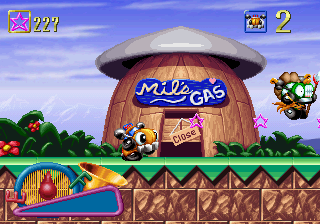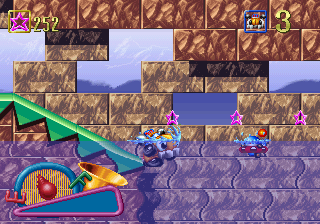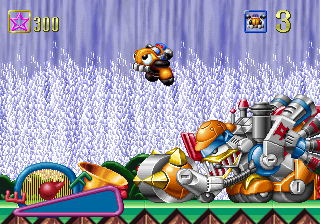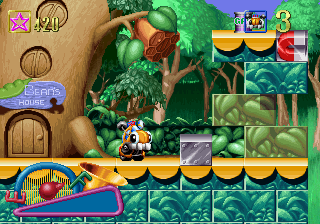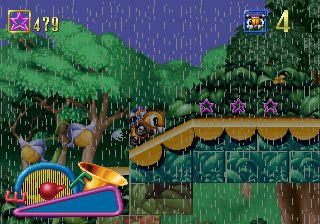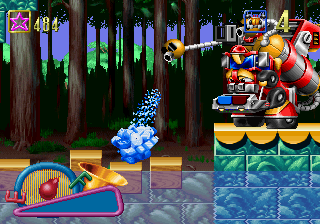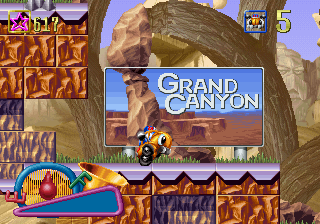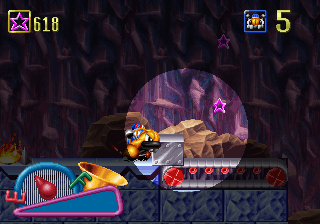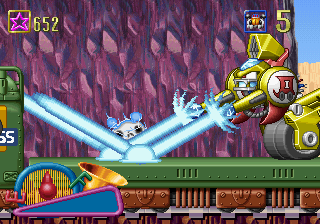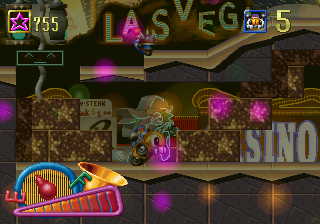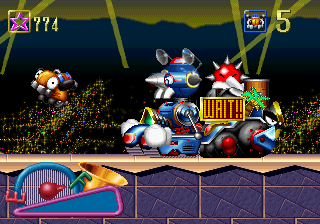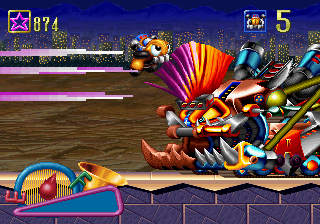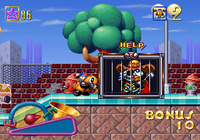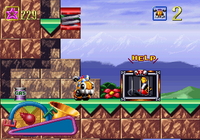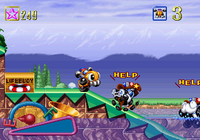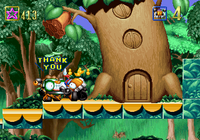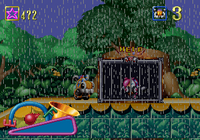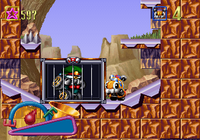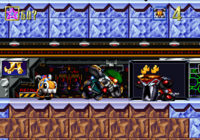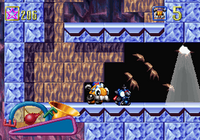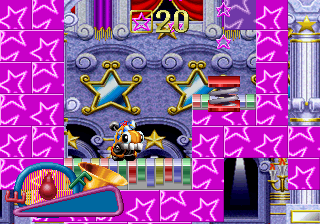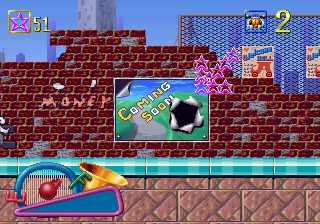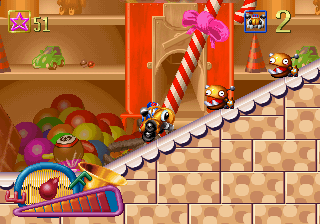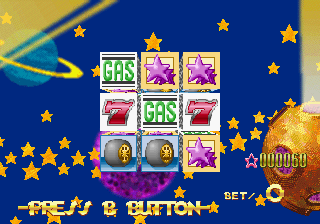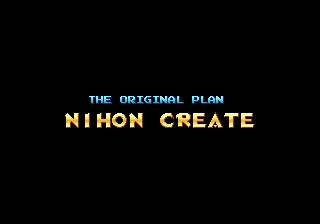Tryrush Deppy
From Sega Retro
| Tryrush Deppy | ||||||||||
|---|---|---|---|---|---|---|---|---|---|---|
| System(s): Sega Saturn | ||||||||||
| Publisher: Nihon Create | ||||||||||
| Developer: System Supply N-Tech | ||||||||||
| Sound driver: SCSP/CD-DA (43 tracks) | ||||||||||
| Genre: Action[1][2] | ||||||||||
| Number of players: 1 | ||||||||||
|
Tryrush Deppy (トライラッシュ デッピー) is a platforming game for the Sega Saturn, released exclusively in Japan in 1996.
Contents
Story
Deppy (デッピー), a yellow taxi cab, is in a race across the United States, from New York to Las Vegas.
Gameplay
Tryrush Deppy is a 2D platforming game in which the player controls a cartoon taxi cab named Deppy as he races through various locations in the United States. Each stage consists of three levels; for the first two levels, Deppy needs to make it to the goal at the end, and the third level is a boss fight. Each boss has a specific weakness that is shown to the player at the start of the fight.
Deppy runs on gasoline; the gas meter appears in the lower-left corner of the screen. Gas acts as both a timer and a health meter, as it continually drains over time and drains more when Deppy is hit by an enemy or a hazard. Deppy can refuel by collecting gas cans scattered throughout the levels. In addition to the necessity of finding gas cans, the game encourages exploration by hiding eight "drama" scenes, ten giant stars for the "Star Room" bonus levels, and five hidden entrances to the "Extra Stage" bonus levels. Deppy's competitors appear in the levels, often as enemies. If Deppy helps one, often by freeing the competitor from a cage, the competitor is sometimes inspired to help Deppy back in some way. There are nine different endings depending on which hidden scenes or bonus levels the player has found.
Deppy moves with ![]() and
and ![]() and ducks with
and ducks with ![]() . Though he is a car, he walks around upright on two tires and controls similarly to most platformer characters. Backtracking is limited since the screen locks a short distance behind Deppy. He can push blocks by moving into them. Deppy jumps with
. Though he is a car, he walks around upright on two tires and controls similarly to most platformer characters. Backtracking is limited since the screen locks a short distance behind Deppy. He can push blocks by moving into them. Deppy jumps with ![]() or
or ![]() (or
(or ![]() ). Holding the button for longer jumps higher. Deppy has a dash maneuver performed by holding and then releasing
). Holding the button for longer jumps higher. Deppy has a dash maneuver performed by holding and then releasing ![]() (or
(or ![]() ,
, ![]() ,
, ![]() , or
, or ![]() ), which costs gas. Holding the button for longer charges a meter under the gas gauge for a longer dash, which expends more fuel. Dashing can be used to drive through multiple enemies in a row, break through weak walls to find hidden rooms and secret items, and damage weak points on bosses. Deppy can dash in midair. Many enemies can be defeated by jumping on them, but some, such as enemies with wearing spiked helmets or carrying torches, can only be harmed by dashing through them.
), which costs gas. Holding the button for longer charges a meter under the gas gauge for a longer dash, which expends more fuel. Dashing can be used to drive through multiple enemies in a row, break through weak walls to find hidden rooms and secret items, and damage weak points on bosses. Deppy can dash in midair. Many enemies can be defeated by jumping on them, but some, such as enemies with wearing spiked helmets or carrying torches, can only be harmed by dashing through them.
Gas is spent passively and also when dashing, getting hit, being dazed, or when Deppy is pulled over by Officer Harris, a black-and-white police vehicle with a mustache who appears in the levels. When Deppy takes damage, he can be spun around, become dizzy, get squashed, or even be frozen or set on fire, during which he is uncontrollable and losing gas, but pressing buttons breaks him out of this. Deppy starts every level with half a tank. Deppy becomes tired and slows down when he is low on gas and loses a life when he runs out of gas, restarting the level from the beginning or from the last checkpoint. The game ends when Deppy loses all of his lives. Progress can be saved to the Saturn's internal memory or to a backup cartridge. The player chooses a name and makes a license plate from various designs when making a save file.
Characters
Deppy's competitors are also anthropomorphized vehicles and appear in the levels, as they are racing to the same destination.
Objects
| Wooden Block | |
|---|---|
| Deppy can push these blocks and use them as platforms to reach higher places. Wooden walls can be busted through with a dash. | |
| Steel Block | |
| Deppy can push these blocks and use them as platforms to reach higher places. Steel blocks stick to magnets when they are moved adjacent to them. | |
| Magnet | |
| Magnets either repel Deppy or attract steel blocks. | |
| Spring | |
| Springs bounce Deppy or blocks higher when they fall on them. | |
| Checkpoint | |
| Checkpoint where Deppy is revived after running out of gas and losing a life. | |
| Goal | |
| Deppy must pass the goal to finish the level. | |
| Bonus Star | |
| Ten bonus stars are hidden in the stages, which provide access to Star Rooms. | |
| Bonus Exit | |
| Deppy must pass the exit to leave the Star Room or Extra Stage. |
Items
| Neon Star | |
|---|---|
| Collectible item. After getting a game over, the player can trade 100 stars for a continue. In addition to being found in the levels, Deppy receives bonus stars for completing Star Rooms or defeating bosses. | |
| Gas Can | |
| Refuels Deppy and partially increases his gas gauge. In addition to being found in the levels, red enemies drop gas cans when defeated. | |
| Battery | |
| Energizes Deppy and surrounds him in a protective shield that makes him invincible for a duration, giving him the benefits of dashing (moving faster and being able to break through weak walls and and plow through multiple enemies) while it lasts. The game counts the number of enemies hit while invincible; hitting 13 enemies awards an extra life. | |
| 1-Up | |
| Gives the player an extra life. |
Stages
| New York to Buffalo | |
|---|---|
|
Boss: Hi-Jacker | |
| Buffalo to Chicago | |
|
Boss: Mangler | |
| Chicago to Denver | |
|
Boss: W-Bull | |
| Denver to Grand Canyon | |
|
Boss: Dead Drank | |
| Grand Canyon to Los Angeles | |
|
Boss: G.O. | |
| Final Stage | |
|
Boss: Bad-Head | |
Drama scenes
There are eight "drama" scenes hidden in the levels that Deppy can find and trigger. This usually entails rescuing one of his competitors. Unlocking a drama scene sometimes causes his competitor to help him later in the game.
Bonus levels
Production credits
- The Original Plan: Nihon Create
- Game Program Design: System Supply N-Tech
- Game Graphic Design: Graphic Factory Tetra
- Executive Producer: Yoshitsugu Itakura
- Producer: Katsurou Uchino
- Director / Game Planner / Object Designer / 3D Model Designer: Hiroshi Ozaki
- Chief Programmer/Visual Programmer: Nobuyuki Shinohara
- Character Designer / The "Dramasystem" Scenario Writer / Visual Illustrator / Object Placement: Kenji Nishimura
- Game Planner / Background Designer / Course Designer / Manufacture Graphic Tools / Object Placement: Toshimichi Uchida
- Assistant Programmer / Executive Supporter / Object Placement: Shinichi Itoh
- Assistant Programmer / Bonusgame Program And Design / Object Placement: Hideo Ozaki
- Object Designer / Object Placement / The "Dramasystem" Assistant: Naomi Takahara
- Specialstage Object Placement / Background Designer / Object Designer: Masahife Fukagawa
- Background Designer / Effect Designer: Tetsuya Okita
- Music Designer / Sound Designer: Jun Fujisaka
- Music Designer: Motonori Okui
- Tryrush Deppy
- To Be Continued.
- (C)1996 Nihon Create All Rights Reserved
Magazine articles
- Main article: Tryrush Deppy/Magazine articles.
Physical scans
| ExpandSega Retro Average |
|---|
| 54 | |
|---|---|
| Based on 5 reviews | |
Technical information
- Main article: Tryrush Deppy/Technical information.
References
- ↑ File:TryrushDeppy Saturn JP Box Back.jpg
- ↑ Jump up to: 2.0 2.1 https://sega.jp/fb/segahard/ss/soft_licensee2.html (Wayback Machine: 2020-03-20 23:05)
- ↑ File:Tryrush Deppy Saturn credits.pdf
- ↑ Famitsu, "1996-11-29" (JP; 1996-11-15), page 1
- ↑ Saturn Fan, "1996 No. 24" (JP; 1996-11-15), page 186
- ↑ Saturn Fan, "1997 No. 1" (JP; 1996-12-27), page 70
- ↑ Sega Saturn Magazine, "1996-20 (1996-11-22)" (JP; 1996-11-08), page 217
- ↑ Sega Saturn Magazine, "Readers rating final data" (JP; 2000-03), page 16
| CollapseTryrush Deppy | |
|---|---|
|
Main page | Magazine articles | Reception | Technical information | |
